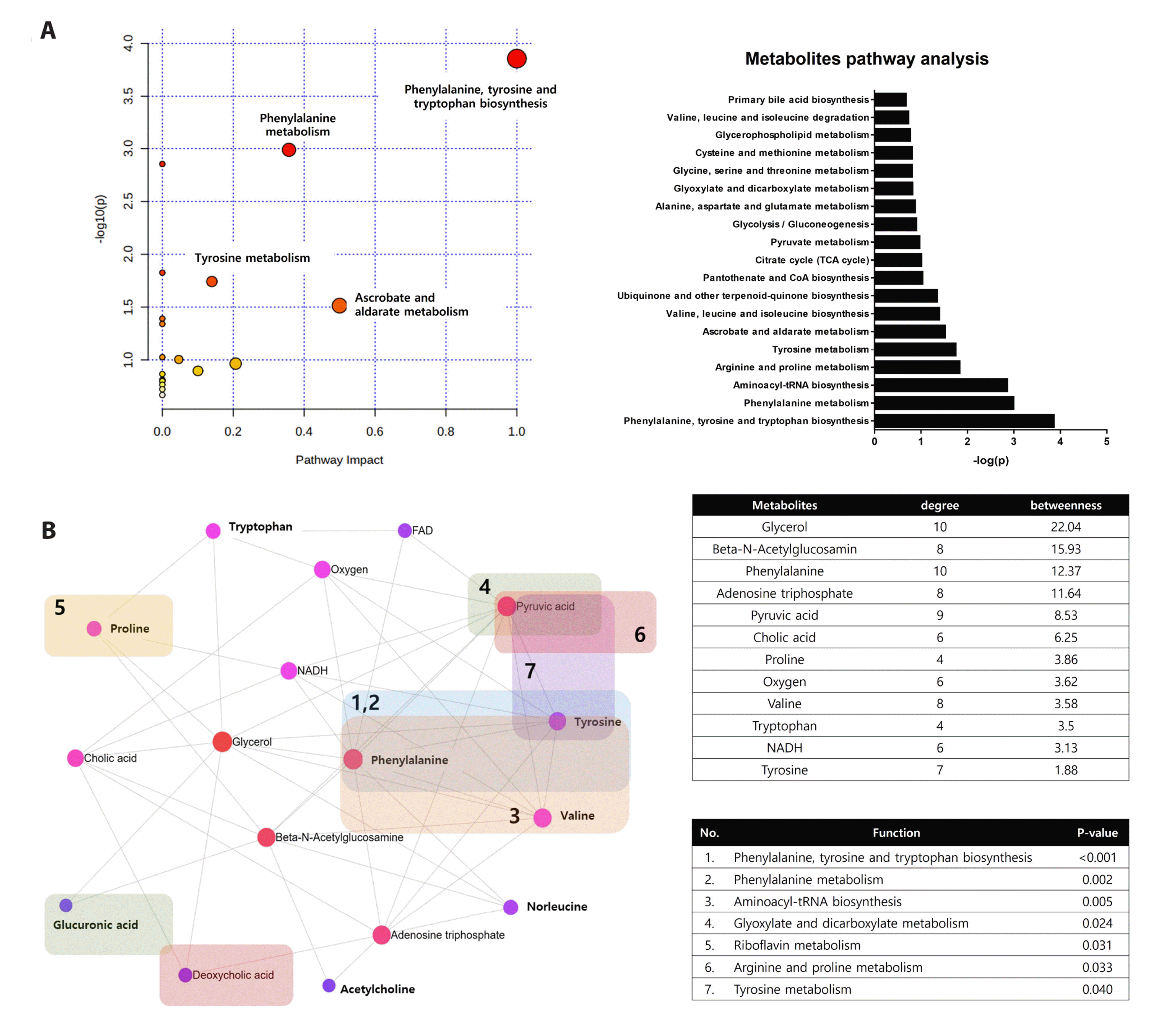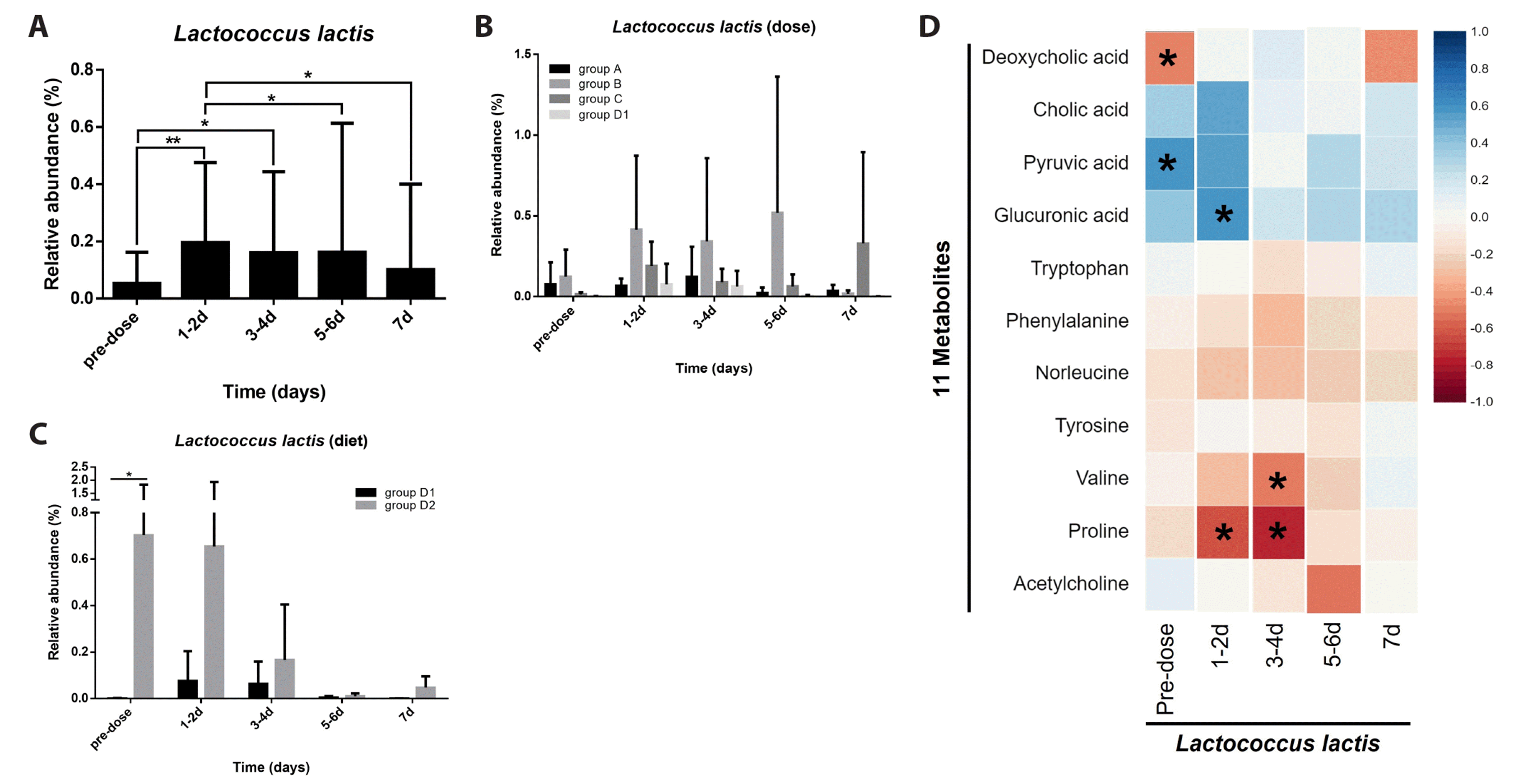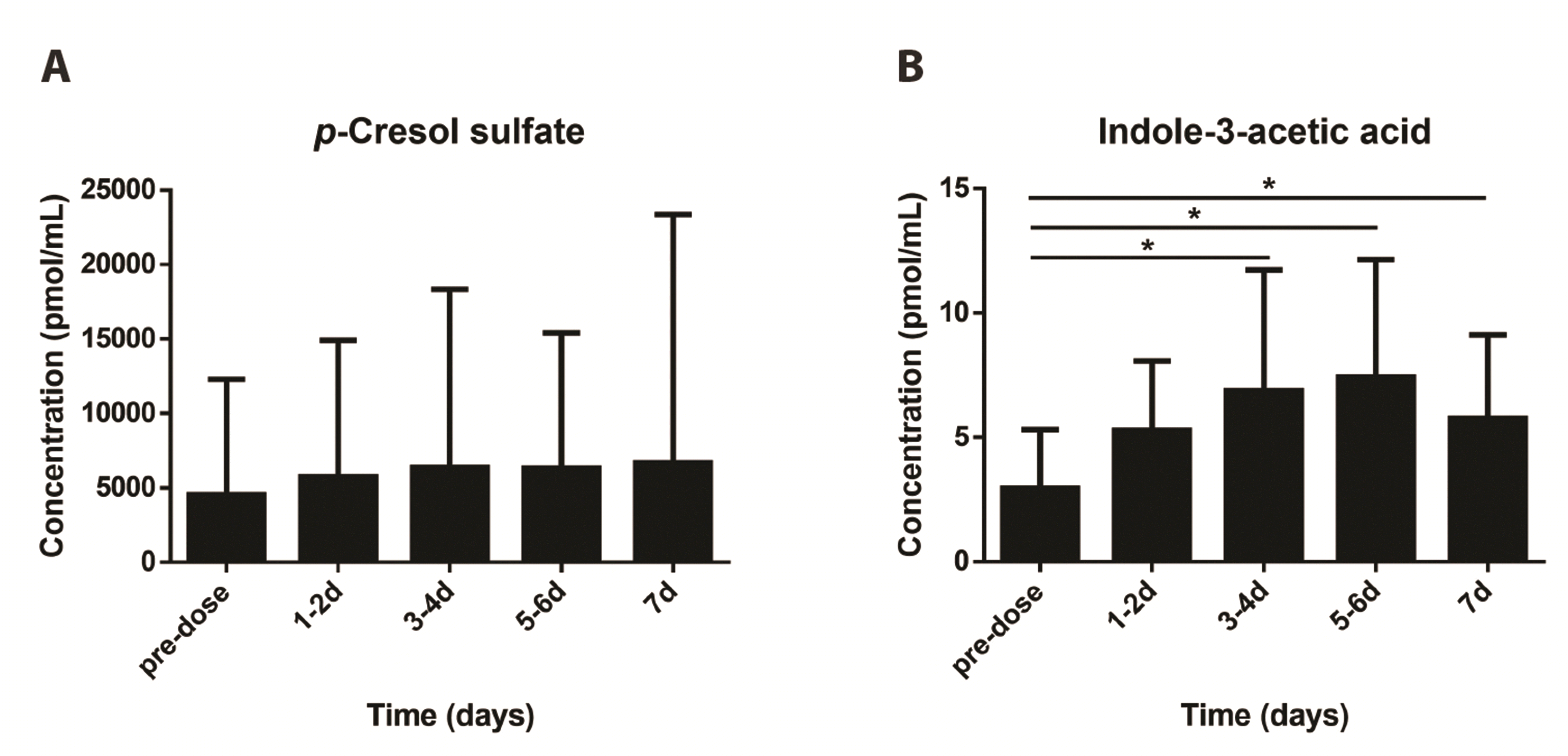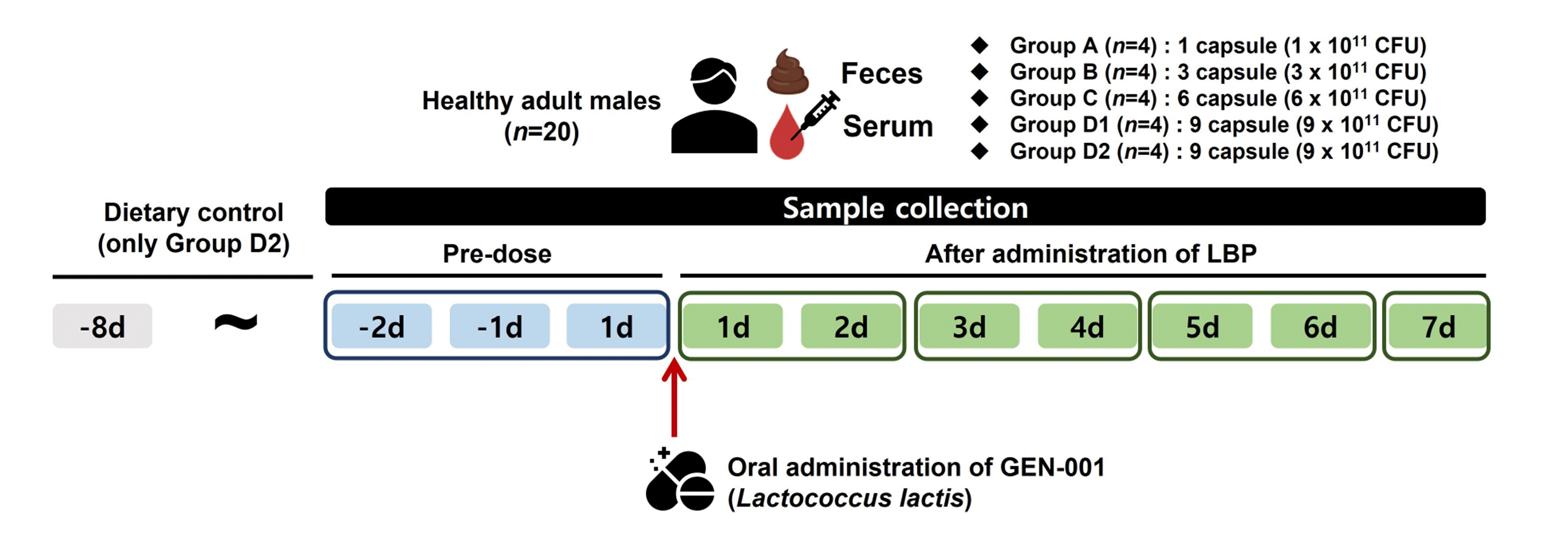1. Candelli M, Franza L, Pignataro G, Ojetti V, Covino M, Piccioni A, Gasbarrini A, Franceschi F. 2021; Interaction between lipopolysaccharide and gut microbiota in inflammatory bowel diseases. Int J Mol Sci. 22:6242. DOI:
10.3390/ijms22126242. PMID:
34200555. PMCID:
PMC8226948.

2. Vatanen T, Kostic AD, d'Hennezel E, Siljander H, Franzosa EA, Yassour M, Kolde R, Vlamakis H, Arthur TD, Hämäläinen AM, Peet A, Tillmann V, Uibo R, Mokurov S, Dorshakova N, Ilonen J, Virtanen SM, Szabo SJ, Porter JA, Lähdesmäki H, et al. DIABIMMUNE Study Group. Xavier RJ. 2016; Variation in microbiome LPS immunogenicity contributes to autoimmunity in humans. Cell. 165:842–853. Erratum in:
Cell. 2016;165:1551. DOI:
10.1016/j.cell.2016.04.007. PMID:
27133167. PMCID:
PMC4950857.

3. Orivuori L, Mustonen K, de Goffau MC, Hakala S, Paasela M, Roduit C, Dalphin JC, Genuneit J, Lauener R, Riedler J, Weber J, von Mutius E, Pekkanen J, Harmsen HJM, Vaarala O. PASTURE Study Group. 2015; High level of fecal calprotectin at age 2 months as a marker of intestinal inflammation predicts atopic dermatitis and asthma by age 6. Clin Exp Allergy. 45:928–939. DOI:
10.1111/cea.12522. PMID:
25758537.

4. Yang W, Cong Y. 2021; Gut microbiota-derived metabolites in the regulation of host immune responses and immune-related inflammatory diseases. Cell Mol Immunol. 18:866–877. DOI:
10.1038/s41423-021-00661-4. PMID:
33707689. PMCID:
PMC8115644.

5. Tremaroli V, Bäckhed F. 2012; Functional interactions between the gut microbiota and host metabolism. Nature. 489:242–249. DOI:
10.1038/nature11552. PMID:
22972297.

6. Postler TS, Ghosh S. 2017; Understanding the holobiont: how microbial metabolites affect human health and shape the immune system. Cell Metab. 26:110–130. DOI:
10.1016/j.cmet.2017.05.008. PMID:
28625867. PMCID:
PMC5535818.

7. Carding S, Verbeke K, Vipond DT, Corfe BM, Owen LJ. 2015; Dysbiosis of the gut microbiota in disease. Microb Ecol Health Dis. 26:26191. DOI:
10.3402/mehd.v26.26191. PMID:
25651997. PMCID:
PMC4315779.

8. Li SX, Armstrong A, Neff CP, Shaffer M, Lozupone CA, Palmer BE. 2016; Complexities of gut microbiome dysbiosis in the context of HIV infection and antiretroviral therapy. Clin Pharmacol Ther. 99:600–611. DOI:
10.1002/cpt.363. PMID:
26940481. PMCID:
PMC4927263.

9. Manichanh C, Borruel N, Casellas F, Guarner F. 2012; The gut microbiota in IBD. Nat Rev Gastroenterol Hepatol. 9:599–608. DOI:
10.1038/nrgastro.2012.152. PMID:
22907164.

10. Federico A, Dallio M, DI Sarno R, Giorgio V, Miele L. 2017; Gut microbiota, obesity and metabolic disorders. Minerva Gastroenterol Dietol. 63:337–344. DOI:
10.23736/S1121-421X.17.02376-5. PMID:
28927249.

11. Wang Z, Wang Q, Zhao J, Gong L, Zhang Y, Wang X, Yuan Z. 2019; Altered diversity and composition of the gut microbiome in patients with cervical cancer. AMB Express. 9:40. DOI:
10.1186/s13568-019-0763-z. PMID:
30904962. PMCID:
PMC6431307.

12. Sims TT, Colbert LE, Zheng J, Delgado Medrano AY, Hoffman KL, Ramondetta L, Jazaeri A, Jhingran A, Schmeler KM, Daniel CR, Klopp A. 2019; Gut microbial diversity and genus-level differences identified in cervical cancer patients versus healthy controls. Gynecol Oncol. 155:237–244. DOI:
10.1016/j.ygyno.2019.09.002. PMID:
31500892. PMCID:
PMC6825899.
13. Kang GU, Jung DR, Lee YH, Jeon SY, Han HS, Chong GO, Shin JH. 2020; Dynamics of fecal microbiota with and without invasive cervical cancer and its application in early diagnosis. Cancers (Basel). 12:3800. DOI:
10.3390/cancers12123800. PMID:
33339445. PMCID:
PMC7766064.

14. Cordaillat-Simmons M, Rouanet A, Pot B. 2020; Live biotherapeutic products: the importance of a defined regulatory framework. Exp Mol Med. 52:1397–1406. DOI:
10.1038/s12276-020-0437-6. PMID:
32908212. PMCID:
PMC8080583.

15. Paquet JC, Claus SP, Cordaillat-Simmons M, Mazier W, Rawadi G, Rinaldi L, Elustondo F, Rouanet A. 2021; Entering first-in-human clinical study with a single-strain live biotherapeutic product: input and feedback gained from the EMA and the FDA. Front Med (Lausanne). 8:716266. DOI:
10.3389/fmed.2021.716266. PMID:
34458291. PMCID:
PMC8385711.

16. Dreher-Lesnick SM, Stibitz S, Carlson PE Jr. 2017; U.S. regulatory considerations for development of live biotherapeutic products as drugs. Microbiol Spectr. 5:BAD–0017. DOI:
10.1128/microbiolspec.BAD-0017-2017. PMID:
28975881.

18. Yu JS, Youn GS, Choi J, Kim CH, Kim BY, Yang SJ, Lee JH, Park TS, Kim BK, Kim YB, Roh SW, Min BH, Park HJ, Yoon SJ, Lee NY, Choi YR, Kim HS, Gupta H, Sung H, Han SH, et al. 2021; Lactobacillus lactis and Pediococcus pentosaceus-driven reprogramming of gut microbiome and metabolome ameliorates the progression of non-alcoholic fatty liver disease. Clin Transl Med. 11:e634. DOI:
10.1002/ctm2.634. PMID:
34965016. PMCID:
PMC8715831.
19. Ye J, Erland LAE, Gill SK, Bishop SL, Verdugo-Meza A, Murch SJ, Gibson DL. 2021; Metabolomics-guided hypothesis generation for mechanisms of intestinal protection by live biotherapeutic products. Biomolecules. 11:738. DOI:
10.3390/biom11050738. PMID:
34063522. PMCID:
PMC8156236.

20. Luerce TD, Gomes-Santos AC, Rocha CS, Moreira TG, Cruz DN, Lemos L, Sousa AL, Pereira VB, de Azevedo M, Moraes K, Cara DC, LeBlanc JG, Azevedo V, Faria AMC, Miyoshi A. 2014; Anti-inflammatory effects of Lactococcus lactis NCDO 2118 during the remission period of chemically induced colitis. Gut Pathog. 6:33. DOI:
10.1186/1757-4749-6-33. PMID:
25110521. PMCID:
PMC4126083.

21. Jin SW, Lee GH, Jang MJ, Hong GE, Kim JY, Park GD, Jin H, Kim HS, Choi JH, Choi CY, Lee SG, Jeong HG, Hwang YP. 2020; Immunomodulatory activity of
Lactococcus lactis GCWB1176 in cyclophosphamide-induced immunosuppression model. Microorganisms. 8:1175. DOI:
10.3390/microorganisms8081175. PMID:
32748895. PMCID:
PMC7464527.

22. Peng X, Zhang R, Duan G, Wang C, Sun N, Zhang L, Chen S, Fan Q, Xi Y. 2018; Production and delivery of Helicobacter pylori NapA in Lactococcus lactis and its protective efficacy and immune modulatory activity. Sci Rep. 8:6435. DOI:
10.1038/s41598-018-24879-x. PMID:
29691472. PMCID:
PMC5915382.
23. Kim S, Kim Y, Lee S, Kim Y, Jeon B, Kim H, Park H. 2022; Live biotherapeutic
Lactococcus lactis GEN3013 enhances antitumor efficacy of cancer treatment via modulation of cancer progression and immune system. Cancers (Basel). 14:4083. DOI:
10.3390/cancers14174083. PMID:
36077619. PMCID:
PMC9455052.
24. Kim SY, Kim JE, Lee KW, Lee HJ. 2009; Lactococcus lactis ssp. lactis inhibits the proliferation of SNU-1 human stomach cancer cells through induction of G0/G1 cell cycle arrest and apoptosis via p53 and p21 expression. Ann N Y Acad Sci. 1171:270–275. DOI:
10.1111/j.1749-6632.2009.04721.x. PMID:
19723065.

25. Kim JY, Woo HJ, Kim YS, Kim KH, Lee HJ. 2003; Cell cycle dysregulation induced by cytoplasm of Lactococcus lactis ssp lactis in SNUC2A, a colon cancer cell line. Nutr Cancer. 46:197–201. DOI:
10.1207/S15327914NC4602_13. PMID:
14690796.

26. Bohlul E, Hasanlou F, Taromchi AH, Nadri S. 2019; TRAIL-expressing recombinant Lactococcus lactis induces apoptosis in human colon adenocarcinoma SW480 and HCT116 cells. J Appl Microbiol. 126:1558–1567. DOI:
10.1111/jam.14237. PMID:
30815963.
27. Abooshahab R, Hooshmand K, Razavi SA, Gholami M, Sanoie M, Hedayati M. 2020; Plasma metabolic profiling of human thyroid nodules by gas chromatography-mass spectrometry (GC-MS)-based untargeted metabolomics. Front Cell Dev Biol. 8:385. DOI:
10.3389/fcell.2020.00385. PMID:
32612989. PMCID:
PMC7308550.

28. Land MH, Rouster-Stevens K, Woods CR, Cannon ML, Cnota J, Shetty AK. 2005; Lactobacillus sepsis associated with probiotic therapy. Pediatrics. 115:178–181. DOI:
10.1542/peds.2004-2137. PMID:
15629999.
29. Kalia VC, Patel SKS, Cho BK, Wood TK, Lee JK. 2022; Emerging applications of bacteria as antitumor agents. Semin Cancer Biol. 86:1014–1025. DOI:
10.1016/j.semcancer.2021.05.012. PMID:
33989734.
30. Blachier F, Andriamihaja M. 2022; Effects of the L-tyrosine-derived bacterial metabolite p-cresol on colonic and peripheral cells. Amino Acids. 54:325–338. DOI:
10.1007/s00726-021-03064-x. PMID:
34468872.
31. Wypych TP, Pattaroni C, Perdijk O, Yap C, Trompette A, Anderson D, Creek DJ, Harris NL, Marsland BJ. 2021; Microbial metabolism of L-tyrosine protects against allergic airway inflammation. Nat Immunol. 22:279–286. DOI:
10.1038/s41590-020-00856-3. PMID:
33495652.
32. Musso NR, Brenci S, Indiveri F, Lotti G. 1997; L-tyrosine and nicotine induce synthesis of L-Dopa and norepinephrine in human lymphocytes. J Neuroimmunol. 74:117–120. DOI:
10.1016/S0165-5728(96)00212-3. PMID:
9119963.
33. Duboc H, Rajca S, Rainteau D, Benarous D, Maubert MA, Quervain E, Thomas G, Barbu V, Humbert L, Despras G, Bridonneau C, Dumetz F, Grill JP, Masliah J, Beaugerie L, Cosnes J, Chazouillères O, Poupon R, Wolf C, Mallet JM, et al. 2013; Connecting dysbiosis, bile-acid dysmetabolism and gut inflammation in inflammatory bowel diseases. Gut. 62:531–539. DOI:
10.1136/gutjnl-2012-302578. PMID:
22993202.

34. Brestoff JR, Artis D. 2013; Commensal bacteria at the interface of host metabolism and the immune system. Nat Immunol. 14:676–684. DOI:
10.1038/ni.2640. PMID:
23778795. PMCID:
PMC4013146.
35. Dsouza M, Menon R, Crossette E, Bhattarai SK, Schneider J, Kim YG, Reddy S, Caballero S, Felix C, Cornacchione L, Hendrickson J, Watson AR, Minot SS, Greenfield N, Schopf L, Szabady R, Patarroyo J, Smith W, Harrison P, Kuijper EJ, et al. 2022; Colonization of the live biotherapeutic product VE303 and modulation of the microbiota and metabolites in healthy volunteers. Cell Host Microbe. 30:583–598.e8. DOI:
10.1016/j.chom.2022.03.016. PMID:
35421353.
36. Agus A, Planchais J, Sokol H. 2018; Gut microbiota regulation of tryptophan metabolism in health and disease. Cell Host Microbe. 23:716–724. DOI:
10.1016/j.chom.2018.05.003. PMID:
29902437.
37. Ghiboub M, Verburgt CM, Sovran B, Benninga MA, de Jonge WJ, Van Limbergen JE. 2020; Nutritional therapy to modulate tryptophan metabolism and aryl hydrocarbon-receptor signaling activation in human diseases. Nutrients. 12:2846. DOI:
10.3390/nu12092846. PMID:
32957545. PMCID:
PMC7551725.
38. Lamas B, Richard ML, Leducq V, Pham HP, Michel ML, Da Costa G, Bridonneau C, Jegou S, Hoffmann TW, Natividad JM, Brot L, Taleb S, Couturier-Maillard A, Nion-Larmurier I, Merabtene F, Seksik P, Bourrier A, Cosnes J, Ryffel B, Beaugerie L, et al. 2016; CARD9 impacts colitis by altering gut microbiota metabolism of tryptophan into aryl hydrocarbon receptor ligands. Nat Med. 22:598–605. DOI:
10.1038/nm.4102. PMID:
27158904. PMCID:
PMC5087285.

39. Zelante T, Iannitti RG, Cunha C, De Luca A, Giovannini G, Pieraccini G, Zecchi R, D'Angelo C, Massi-Benedetti C, Fallarino F, Carvalho A, Puccetti P, Romani L. 2013; Tryptophan catabolites from microbiota engage aryl hydrocarbon receptor and balance mucosal reactivity via interleukin-22. Immunity. 39:372–385. DOI:
10.1016/j.immuni.2013.08.003. PMID:
23973224.
40. Li Y, Innocentin S, Withers DR, Roberts NA, Gallagher AR, Grigorieva EF, Wilhelm C, Veldhoen M. 2011; Exogenous stimuli maintain intraepithelial lymphocytes via aryl hydrocarbon receptor activation. Cell. 147:629–640. DOI:
10.1016/j.cell.2011.09.025. PMID:
21999944.

41. Wang Q, Yang K, Han B, Sheng B, Yin J, Pu A, Li L, Sun L, Yu M, Qiu Y, Xiao W, Yang H. 2018; Aryl hydrocarbon receptor inhibits inflammation in DSSinduced colitis via the MK2/pMK2/TTP pathway. Int J Mol Med. 41:868–876. DOI:
10.3892/ijmm.2017.3262.
42. Nikolaus S, Schulte B, Al-Massad N, Thieme F, Schulte DM, Bethge J, Rehman A, Tran F, Aden K, Häsler R, Moll N, Schütze G, Schwarz MJ, Waetzig GH, Rosenstiel P, Krawczak M, Szymczak S, Schreiber S. 2017; Increased tryptophan metabolism is associated with activity of inflammatory bowel diseases. Gastroenterology. 153:1504–1516.e2. DOI:
10.1053/j.gastro.2017.08.028. PMID:
28827067.

43. Palego L, Betti L, Rossi A, Giannaccini G. 2016; Tryptophan biochemistry: structural, nutritional, metabolic, and medical aspects in humans. J Amino Acids. 2016:8952520. DOI:
10.1155/2016/8952520. PMID:
26881063. PMCID:
PMC4737446.
44. Park J, Kim NE, Yoon H, Shin CM, Kim N, Lee DH, Park JY, Choi CH, Kim JG, Kim YK, Shin TS, Yang J, Park YS. 2021; Fecal microbiota and gut microbe-derived extracellular vesicles in colorectal cancer. Front Oncol. 11:650026. DOI:
10.3389/fonc.2021.650026. PMID:
34595105. PMCID:
PMC8477046.
45. Moschen AR, Gerner RR, Wang J, Klepsch V, Adolph TE, Reider SJ, Hackl H, Pfister A, Schilling J, Moser PL, Kempster SL, Swidsinski A, Orth Höller D, Weiss G, Baines JF, Kaser A, Tilg H. 2016; Lipocalin 2 protects from inflammation and tumorigenesis associated with gut microbiota alterations. Cell Host Microbe. 19:455–469. DOI:
10.1016/j.chom.2016.03.007. PMID:
27078067.
47. Park BH, Kim IS, Park JK, Zhi Z, Lee HM, Kwon OW, Lee BC. 2021; Probiotic effect of
Lactococcus lactis subsp
. cremoris RPG-HL-0136 on intestinal mucosal immunity in mice. Appl Biol Chem. 64:93. DOI:
10.1186/s13765-021-00667-6.
48. Nishiyama K, Kobayashi T, Sato Y, Watanabe Y, Kikuchi R, Kanno R, Koshizuka T, Miyazaki N, Ishioka K, Suzutani T. 2018; A double-blind controlled study to evaluate the effects of yogurt enriched with
Lactococcus lactis 11/19-B1 and
Bifidobacterium lactis on serum low-density lipoprotein level and antigen-specific interferon-γ releasing ability. Nutrients. 10:1778. DOI:
10.3390/nu10111778. PMID:
30453487. PMCID:
PMC6266548.
49. Pan H, Sun T, Cui M, Ma N, Yang C, Liu J, Pang G, Liu B, Li L, Zhang X, Zhang W, Chang J, Wang H. 2022; Light-sensitive
Lactococcus lactis for microbe-gut-brain axis regulating via upconversion optogenetic micro-nano system. ACS Nano. 16:6049–6063. DOI:
10.1021/acsnano.1c11536. PMID:
35362965.

51. Bruijning M, Ayroles JF, Henry LP, Koskella B, Meyer KM, Metcalf CJE. 2023; Relative abundance data can misrepresent heritability of the microbiome. Microbiome. 11:222. DOI:
10.1186/s40168-023-01669-w. PMID:
37814275. PMCID:
PMC10561453.
52. Taguer M, Maurice CF. 2016; The complex interplay of diet, xenobiotics, and microbial metabolism in the gut: Implications for clinical outcomes. Clin Pharmacol Ther. 99:588–599. DOI:
10.1002/cpt.366. PMID:
26950037.

53. Zeng Z, Liu W, Luo S, Hu C, Xu N, Huang A, Xi T, Xing Y. 2019; Shape of gastrointestinal immunity with non-genetically modified Lactococcus lactis particles requires commensal bacteria and myeloid cells-derived TGF-β1. Appl Microbiol Biotechnol. 103:3847–3861. DOI:
10.1007/s00253-019-09716-z. PMID:
30852661.









 PDF
PDF Citation
Citation Print
Print



 XML Download
XML Download